Building your Instagram account is very similar to creating a personal Instagram account. It would be best to have an eye-catching, easy-to-navigate layout and quality content. The difference lies in the goals of these accounts. While personal accounts are for sharing with friends and family, a business account is for marketing and selling products.
Your personal Instagram account should have a different layout than your business account. Ronn Torossian encourages businesses to create accounts representative of who they are as a brand.
To use Instagram for your business, you must make your account stand out by promoting your brand’s identity. To do this, use beautiful imagery with text overlays that match the look of your website and products. Create a color scheme that is workable across all platforms: desktop, mobile, and tablet.
The purpose of your personal Instagram is to share with family, friends, and followers. In the marketing world, they call this ‘native advertising.’ Native advertising is when brands show their branded content on third-party platforms such as Twitter, Facebook, and Instagram without explicitly asking for money or an advertisement. This type of content could include products from a company, travel photos from a vacation, or a photo from one of their events.

What are some examples of native advertising on social media? Let’s say you like a brand’s product and want to support them. You could repost the effect on your Instagram account. Or you could post a photo of you enjoying a product at an event.
Your goal should be to provide value through your content. It’s a win-win for both parties. If you don’t like certain products, don’t bother posting them on your account. Remember, this is supposed to be a fun way to share photos, not a sales pitch.
A business account has a different purpose. Businesses buy advertisements and sponsored posts on social media platforms, including Instagram, to advertise their products or sales they are running at their business location:
Your business type will determine what kind of content makes sense for your account. For example, if you own a restaurant, you can post different photos. You can post photos of the food, interior design, or even pictures from events at your restaurant.
Your goal is to build brand awareness with your followers in hopes that they will want to visit your location and purchase goods and services from you.
The main difference in the purpose of these two accounts is that a person’s Instagram account is designed to share content while a business account sells goods and services. These goals will determine what type of content appears on these accounts.





